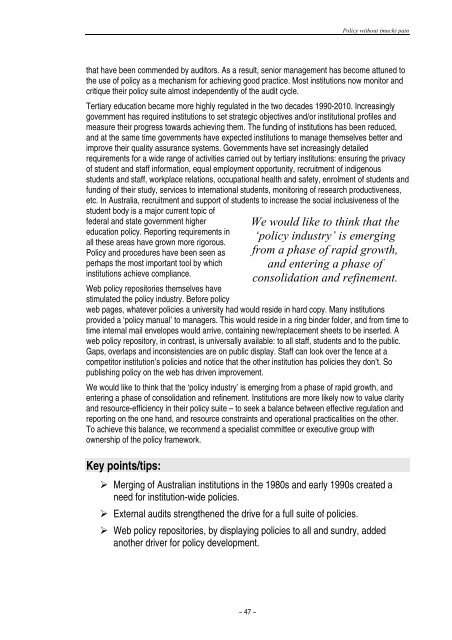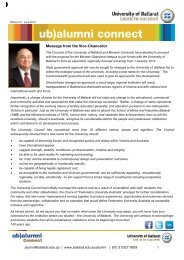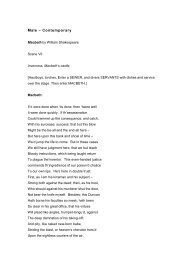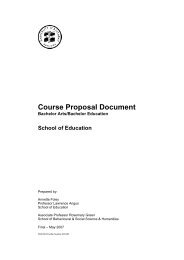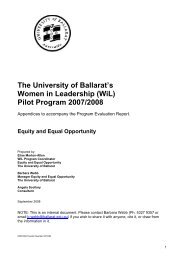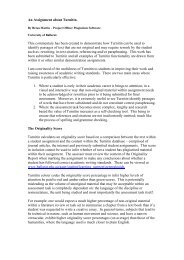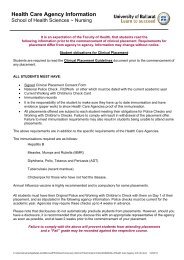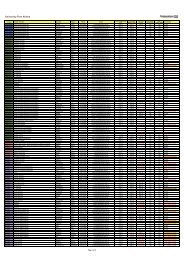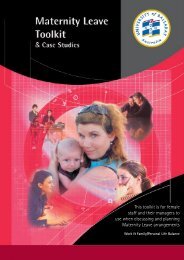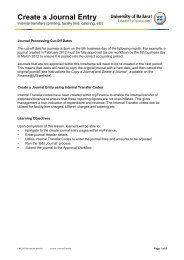Policy without (much) pain - University of Ballarat
Policy without (much) pain - University of Ballarat
Policy without (much) pain - University of Ballarat
- No tags were found...
Create successful ePaper yourself
Turn your PDF publications into a flip-book with our unique Google optimized e-Paper software.
<strong>Policy</strong> <strong>without</strong> (<strong>much</strong>) <strong>pain</strong>that have been commended by auditors. As a result, senior management has become attuned tothe use <strong>of</strong> policy as a mechanism for achieving good practice. Most institutions now monitor andcritique their policy suite almost independently <strong>of</strong> the audit cycle.Tertiary education became more highly regulated in the two decades 1990-2010. Increasinglygovernment has required institutions to set strategic objectives and/or institutional pr<strong>of</strong>iles andmeasure their progress towards achieving them. The funding <strong>of</strong> institutions has been reduced,and at the same time governments have expected institutions to manage themselves better andimprove their quality assurance systems. Governments have set increasingly detailedrequirements for a wide range <strong>of</strong> activities carried out by tertiary institutions: ensuring the privacy<strong>of</strong> student and staff information, equal employment opportunity, recruitment <strong>of</strong> indigenousstudents and staff, workplace relations, occupational health and safety, enrolment <strong>of</strong> students andfunding <strong>of</strong> their study, services to international students, monitoring <strong>of</strong> research productiveness,etc. In Australia, recruitment and support <strong>of</strong> students to increase the social inclusiveness <strong>of</strong> thestudent body is a major current topic <strong>of</strong>federal and state government highereducation policy. Reporting requirements inall these areas have grown more rigorous.<strong>Policy</strong> and procedures have been seen asperhaps the most important tool by whichinstitutions achieve compliance.Web policy repositories themselves havestimulated the policy industry. Before policyweb pages, whatever policies a university had would reside in hard copy. Many institutionsprovided a ‘policy manual’ to managers. This would reside in a ring binder folder, and from time totime internal mail envelopes would arrive, containing new/replacement sheets to be inserted. Aweb policy repository, in contrast, is universally available: to all staff, students and to the public.Gaps, overlaps and inconsistencies are on public display. Staff can look over the fence at acompetitor institution’s policies and notice that the other institution has policies they don’t. Sopublishing policy on the web has driven improvement.We would like to think that the ‘policy industry’ is emerging from a phase <strong>of</strong> rapid growth, andentering a phase <strong>of</strong> consolidation and refinement. Institutions are more likely now to value clarityand resource-efficiency in their policy suite – to seek a balance between effective regulation andreporting on the one hand, and resource constraints and operational practicalities on the other.To achieve this balance, we recommend a specialist committee or executive group withownership <strong>of</strong> the policy framework.Key points/tips:We would like to think that the‘policy industry’ is emergingfrom a phase <strong>of</strong> rapid growth,and entering a phase <strong>of</strong>consolidation and refinement.‣ Merging <strong>of</strong> Australian institutions in the 1980s and early 1990s created aneed for institution-wide policies.‣ External audits strengthened the drive for a full suite <strong>of</strong> policies.‣ Web policy repositories, by displaying policies to all and sundry, addedanother driver for policy development.~ 47 ~


